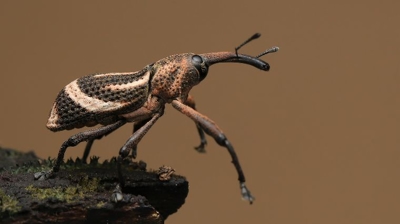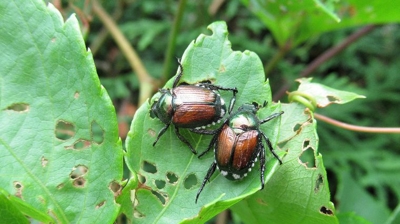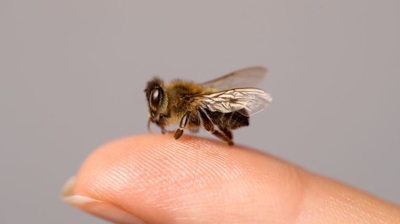
Velvet Ants
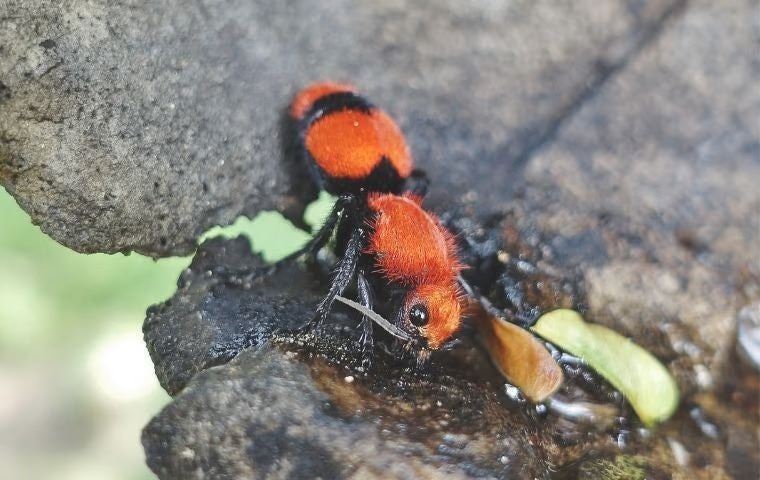
What Are Velvet Ants?
Velvet ants, despite their name, are not true ants. They are actually a type of wasp belonging to the family Mutillidae. The name “velvet ant” typically refers to the wingless females of the species, which resemble large, hairy ants and are often brightly colored—commonly red, orange, yellow, or white with contrasting black patterns. This vivid coloration is an example of aposematism, a biological warning signal to potential predators that they are dangerous or distasteful.
Are Velvet Ants Harmful?
Velvet ants, while not typically considered major pests, can be regarded as harmful or problematic due to their painful sting, and the potential for alarming encounters:
Painful and Potentially Dangerous Sting
- Primary Concern: The most well-known and widely feared trait of velvet ants is the sting of the wingless female. Their sting is among the most painful in the insect world and has earned some species the nickname “cow killer.”
- Details: The sting is not lethal to humans or large animals, but it is intensely painful, often described as sharp, burning, and long-lasting. The reaction can be severe for sensitive individuals, including local swelling, redness, and discomfort lasting several hours. In rare cases, those who are allergic to wasp venom may experience an anaphylactic reaction, which could be life-threatening without immediate medical intervention.
Potential Hazards to Pets
- Primary Concern: Pets, especially dogs, may attempt to sniff, bite, or paw at velvet ants, resulting in stings to sensitive areas like the nose or mouth.
- Details: The sting can cause significant pain and distress to animals. In some cases, pets may experience swelling or allergic reactions that require veterinary care. Multiple interactions could condition pets to become fearful or aggressive in similar situations.
Nuisance Factor in Residential or Recreational Areas
- Primary Concern: While solitary and generally not aggressive, velvet ants may occasionally wander into homes, garages, or populated outdoor areas such as parks and yards.
- Details: They can cause panic or fear, especially because of their wasp-like appearance and fast, erratic movements. Encounters can be especially concerning in households with children or pets, who may attempt to handle them out of curiosity. Their presence may be perceived as an infestation, even though they do not nest or multiply indoors.
Velvet Ant Types
- Red Velvet Ants (Dasymutilla occidentalis) – Red velvet ants are among the largest and most recognizable velvet ants in North America. The females are wingless, covered in bright red and black hairs, and deliver a notoriously painful sting. Males have wings and are harmless. They are commonly found in sandy areas and meadows in the eastern and southern United States.
- Eastern Velvet Ants (Dasymutilla spp.) – This term typically refers to a number of species within the Dasymutilla genus found in the eastern U.S.. They share similar traits—bright warning colors, strong exoskeletons, and a parasitic lifestyle. Females lay eggs in the nests of ground-nesting bees or wasps, where their larvae consume the host's developing offspring.
Velvet Ant Appearance
Velvet ants are visually striking insects, easily recognizable due to their vibrant coloration, dense body hairs, and ant-like appearance. However, only the females resemble ants—this is because female velvet ants are wingless, while the males have wings and look more like conventional wasps.
- Size: Velvet ants range in size from 1/8 inch to over 1 inch (3 to 25 mm) depending on the species. Some species, such as Dasymutilla occidentalis (commonly called the "cow killer"), can grow over an inch long, making them particularly noticeable.
- Coloration: Bright, contrasting colors are a hallmark of velvet ants. These colors serve as a warning to predators (aposematism). Common color patterns include: red and black (most iconic, especially in females), orange and black, white and black, and yellow and black. The colors are typically arranged in bold stripes or spots along the abdomen and thorax.
- Females (Wingless): Strong resemblance to ants but larger and more robust. Body covered in dense, velvety hairs (setae), giving a plush appearance. Lack wings entirely. Possess a long, curved stinger (actually a modified ovipositor), capable of delivering a powerful sting. Move quickly and erratically on the ground.
- Males (Winged): Appear more like typical wasps. Generally smaller and slimmer than females. Have two pairs of wings, often translucent or lightly tinted. Do not have a stinger, and therefore cannot sting.
- Head and Antennae: Antennae are straight and bead-like, unlike the elbowed antennae of true ants. The head is broad, with strong mandibles used for defense or manipulating host cells during parasitism.
- Legs: All six legs are covered with fine hairs. Legs are often dark-colored, but in some species, they may have reddish or yellowish tinges. Well-adapted for fast running, especially in wingless females.
- Movement and Behavior: Female velvet ants move rapidly and erratically across open ground. Their unusual gait, combined with their vivid coloring, makes them stand out in natural habitats like sandy trails, fields, or gardens.
Velvet Ant Habitat
Velvet ants are most commonly found in warm, dry, and sandy environments, where their preferred hosts—ground-nesting bees and wasps—are abundant. These habitats provide both the nesting sites for their parasitic life cycle and the open terrain they prefer for movement and foraging.
Geographic Distribution
Velvet ants are found worldwide, but they are most diverse and abundant in arid and semi-arid regions. In the United States, they are especially common in:
- Southern and Southwestern states (Texas, Arizona, New Mexico, California)
- Southeastern states (Florida, Georgia, Alabama, Mississippi, South Carolina)
- Mid-Atlantic and lower Midwest regions (Virginia, Missouri, Kansas)
The species Dasymutilla occidentalis (cow killer) is widely distributed throughout the eastern and central U.S..
Preferred Habitat Types
Velvet ants prefer habitats that support ground-nesting bee and wasp populations, which serve as hosts for their larvae. Common habitats include:
Dry, Sandy Soils
- Sandy fields
- Scrublands
- Dunes
- Desert margins
Sandy soils are easy for host insects to burrow into, and they provide an ideal surface for female velvet ants to run across while searching for nests to parasitize.
Open, Sunny Areas
- Roadsides and dirt paths
- Trails and hiking areas
- Open grassy or weedy patches
- Bare soil near fences, barns, or outbuildings
Velvet ants are diurnal (active during the day) and are particularly visible in sunlit, exposed areas where they scurry across the ground.
Transitional Habitats
- Edges of forests or woodlands
- Meadows and glades
- Prairie-type landscapes
These edge zones often have a mix of vegetation and exposed soil, which supports both nectar sources and nesting hosts.
Around Structures and Landscaped Areas
Though velvet ants don’t infest buildings or form colonies like ants or termites, they may occasionally be found near:
- Sidewalks, patios, or foundations with sandy or mulched landscaping
- Gardens with abundant flowering plants (nectar source for adults)
- Abandoned or little-used structures, such as sheds or barns, if sandy soil is nearby
They are typically just passing through in search of food or host nests, not establishing permanent residence.
Velvet Ant Diet
Velvet ants have varying dietary needs depending on their life stage—larval or adult—and their diets differ significantly between the two.
Adult Velvet Ant Diet
Adult velvet ants are primarily nectar feeders. They visit flowering plants to consume nectar, which provides the energy they need for their active, solitary lifestyles.
- Nectar is rich in sugars and is their main energy source. They may also consume water and plant juices if available.
- Honeydew from aphids or scale insects, though this is less common.
- Overripe fruit juices, sap, or other sweet liquids in the environment.
Feeding Behavior:
- Velvet ants are diurnal (active during the day), and you may see them foraging on low-lying flowers in sunny, open habitats.
- Since they are wingless (females), they rely on ground-level or low-blooming plants, such as wildflowers, clover, milkweed, and goldenrod.
Larval Velvet Ant Diet
Velvet ant larvae are external parasitoids. This means they feed on and ultimately kill their host, usually the developing stages of other insects—specifically, ground-nesting bees and wasps.
Process:
- The female velvet ant locates a suitable host nest (usually a burrow of a solitary wasp or bee).
- She lays her egg inside the nest on or near the host larva or pupa.
- When the velvet ant larva hatches, it begins to feed on the host, consuming it as it develops.
- The larva pupates within the host’s burrow and later emerges as an adult.
Common Hosts:
- Solitary ground-nesting wasps, such as cicada killers or spider wasps.
- Solitary bees, such as digger bees or miner bees.
In rare cases, they may parasitize other insects like beetles or moths, but their primary targets are Hymenopterans.
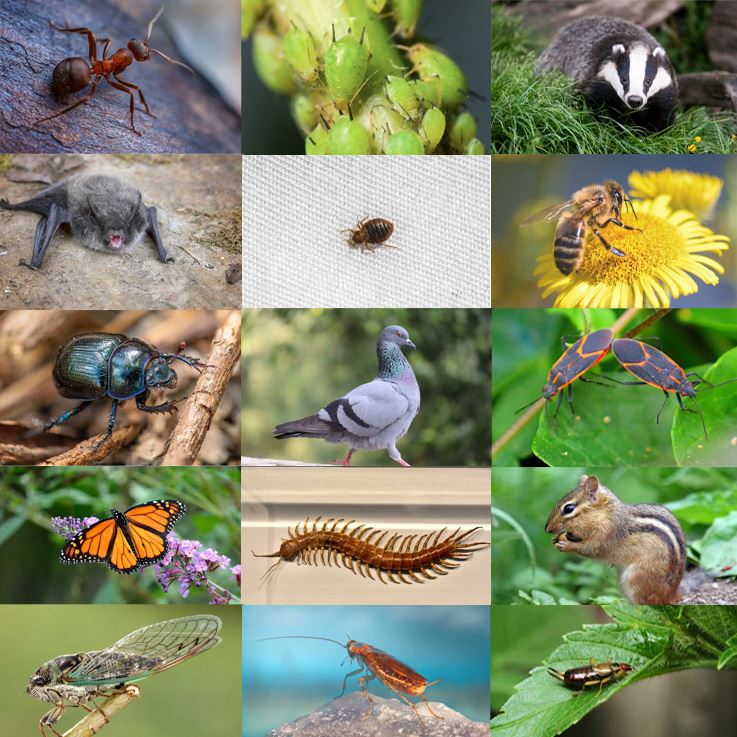
Velvet Ant Life Cycle
The life cycle of velvet ants is a fascinating and complex process that reflects their parasitic nature and solitary behavior. Velvet ants' life cycle closely resembles that of other parasitoid wasps, with significant differences between the male and female roles and between the larval and adult stages.
- Egg Stage: The female velvet ant locates the underground nest of a solitary host insect, typically a ground-nesting wasp or bee (e.g., cicada killers, digger wasps, or miner bees). Using her strong mandibles and robust legs, she digs into the nest. She then lays one egg per host cell, typically directly on or next to the host larva or pupa. The egg is tiny and white, often unnoticed within the host's nest. Females are extremely selective, often spending hours locating the right host.
- Larval Stage: Upon hatching, the velvet ant larva attaches to and begins feeding on the host insect. The larva is an external parasitoid, meaning it feeds from the outside of the host’s body, eventually consuming it entirely. This stage is lethal to the host, as the larva depends entirely on the host’s tissue for nutrition. This stage can last several days to a few weeks, depending on environmental conditions and the size of the host. As it grows, the larva molts through several instars. Once feeding is complete, it prepares for pupation in the same underground chamber.
- Pupal Stage: The mature larva spins a silken cocoon inside the host burrow or nest chamber. Inside this protective casing, it transforms from a soft-bodied larva into a fully formed adult through complete metamorphosis. Pupation may take several weeks to a few months depending on species and climate. In colder regions, the pupal stage may overwinter, with adults emerging the following spring or summer.
- Adult Stage: Once development is complete, the adult velvet ant emerges from the host’s burrow and begins its solitary life. Males and females look very different: Females are wingless, stout, and ant-like. Males are winged, wasp-like, and capable of flight. Females spend most of their time searching for nectar to feed on, and locating new host nests to lay eggs. Males focus on locating and mating with females. They do not participate in host-seeking or egg-laying.
- Lifespan: Adults typically live for a few weeks to a few months, with much of their life spent foraging or mating. Mating is brief and occurs on the ground or on low vegetation.

Hear From Our Happy Customers
-
"Professional & Considerate"
I’m pleased with Miche services. Jarvis came today. Professional and considerate. Thank you!
- Judy B. -
"Fantastic & Patient"
Jarvis was fantastic and patient. He answered my questions with an in-depth explanation and addressed all of my areas of concern. Would love for him to be my assigned tech going forward. Well done!
- Yonnette M. -
"Great Communication"
Tech was on time, communication was great, and he accommodated my needs.
- Alonzo W. -
"Wonderful Service"
Wonderful service. Jarvis is great. Took care of everything I needed. Thank you!
- Henry P. -
"Very Knowledgeable"
The tech that arrived was courteous, professional, and very knowledgeable. He was Great.
- Uerial I. -
"Exceeds Expectations"
I can’t say enough positive things about this company... The tech that came out, Jarvis went above and beyond my expectations. Thank you guys, I will continue using your services.
- Jake M.

